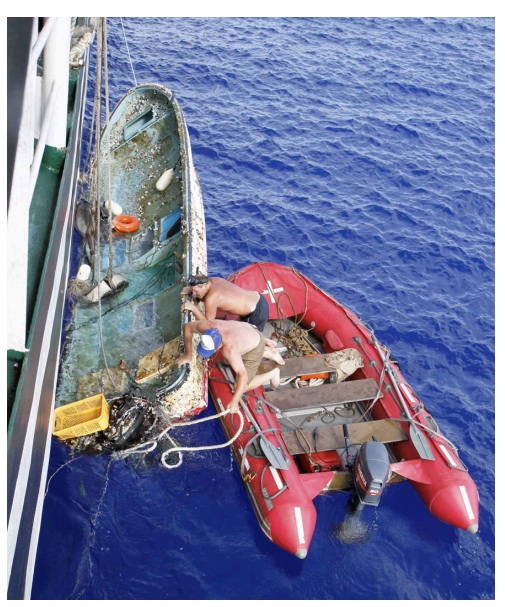
Survey Keeping Close Tabs on Japan Tsunami Debris

The tsunami triggered by last year's devastating earthquake in Japan produced an estimated 25 million tons of debris. Much of this debris was swept into the Pacific Ocean. Where it will go is what scientists want to know.
Since that magnitude 9.0 quake, the debris that has stayed afloat has drifted apart due to winds and ocean currents, with most of it moving eastward. Scientists predicted the debris could wash up along the West Coast of the United States by next year and Hawaii perhaps as soon as this winter. But the makeup of the debris and how much is still floating on the surface are largely unknown.
Scientists have now deployed hundreds of high-tech devices to help monitor the path of the debris, which could be hazardous to ships, marine life and coastlines.
Buoys in place
To track where this debris is headed, a team of scientists and conservationists from the University of Hawaii at Manoa and at Hilo, the Scripps Institution of Oceanography, and the Ocean Recovery Alliance has surveyed the debris field and marked it with satellite-tracked drifting buoys, designed to simulate the motion of different types of debris. This drifter array, deployed in a line between Midway Atoll and the leading edge of the tsunami debris field, can now monitor the debris' movement remotely and provide warnings. [History's Biggest Tsunamis]
At the end of November 2011, the team launched an expedition from Honolulu to Midway Atoll and beyond. The team relied on the projections of a computer model to guide their debris search. The model, based on the trajectories of historical drifters, predicted that the debris was heading toward Midway and Papahanaumokuakea Marine National Monument, arriving there as early as this winter.
The model's trajectory had been confirmed at the end of September 2011 by the Russian ship Pallada, which reported the edge of the debris field 250 miles (400 kilometers) northwest of Midway. About 100 miles (161 km) farther on, the ship found a 20-foot (6-meter) boat from Fukushima.
Sign up for the Live Science daily newsletter now
Get the world’s most fascinating discoveries delivered straight to your inbox.
Avoiding the atolls
The debris survey team also deployed 400 numbered wooden blocks along the route, often near floating debris. If boaters, fishermen and beachgoers find these blocks and contact the scientists by the information on the blocks, they will help the debris trackers' understanding of the motion of debris and currents in this remote region.
So far, the team has found that the Japan tsunami debris has recently not advanced toward Midway, but instead has been flowing eastward well to the north of the atolls. Analysis of the ocean currents shows that for the past weeks, the general flow around the Hawaiian Islands has been from the southwest, producing a front 300 miles to 400 miles (483 to 644 km) northwest of Midway that has kept the debris north of the islands.
Although this flow has prevented tsunami debris from approaching the islands, it carries a lot of trash from the Pacific Garbage Patch between Hawaii and California. The expedition documented 175 pieces of ordinary debris. The team photographed and collected many of the pieces for more thorough laboratory examination. Radiation testing on these pieces of debris, and the surrounding water, has not revealed any significant radiation.
Follow OurAmazingPlanet for the latest in Earth science and exploration news on Twitter @OAPlanet and on Facebook.
Science news this week: Possible signs of life on another planet and a 'useless' female organ
Universe may revolve once every 500 billion years — and that could solve a problem that threatened to break cosmology
Scientists hijacked the human eye to get it to see a brand-new color. It's called 'olo.'











